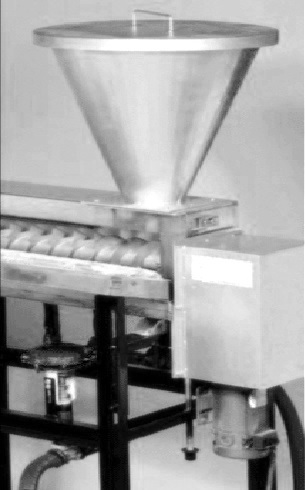Published on Jun 05, 2023
Cryogenic Grinding
The term "Cryogenics" originates from Greek word which means creation or production by means of cold. As prices for energy and raw materials rise and concern for the environment makes safe waste disposal difficult and Costly, resource recovery becomes a vital matter for today's business. Cryogenic grinding technology can efficiently grind most tough materials and can also facilitate Cryogenic recycling of tough composite materials and multi component scrap. The heart of this technology is the CRYO-GRIND SYSTEM. It employs a cryogenic process to embrittle and grind materials to achieve consistent particle size for a wide range of products. The cryogenic process also has a unique capability for recycling difficult to separate composite materials.
Cryogenic grinding is a method of powdering herbs at sub-zero temperatures ranging from 0 to minus 70°F. The herbs are frozen with liquid nitrogen as they are being ground. This process does not damage or alter the chemical composition of the plant in any way. Normal grinding processes which do not use a cooling system can reach up to 200°F. These high temperatures can reduce volatile components and heat-sensitive constituents in herbs. The cryogenic grinding process starts with air-dried herbs, rather than freeze-dried herbs.
Solid materials are ground or pulverized by way of hammer mills, attrition mills, granulators or other equipment. A smaller particle size is usually needed to enhance the further processing of the solid, as in mixing with other materials. A finer particle also helps in melting of rubber and plastics for molding. However, many materials are either very soft or very tough at room temperatures. By cooling to cryogenic temperatures with liquid nitrogen, these may be embrittled and easily fractured into small particles.
A scientifically controlled study using four herbs was conducted at Frontier Herbs in the Fall of 1996, comparing cryogenic grinding methods with normal grinding methods. The herbs tested included feverfew, goldenseal, valerian and echinacea. In all cases the cryogenically ground herb contained greater amounts of the constituents tested. Feverfew herb showed the greatest difference, with the cryogenically ground herb containing 21.8% higher levels of parthenolide, the primary active constituent. Valerian root showed an 18.7% increase in valerenic acid when cryogenically ground. Goldenseal root showed a 16.4% increase in berberine and 10.7% increase in hydrastine. Lastly, Echinacea purpurea root showed a 12.1% increase in total phenolic content in the cryogenically ground root. Test results were obtained by HPLC (high performance liquid chromatography) methods.
Cryogenic grinding was shown to significantly affect active constituent levels in herbs. Test results showed an average increase of 15.6% in constituents tested in four medicinal herbs when they were ground cryogenically. The range was 10.7% to 21.8%, indicating that some herbs are affected more than others by the temperatures at which they're ground.
CRYOGENIC GRINDING PROCESS
Since almost all materials embrittle when exposed to cold temperatures, cryogenic size reduction utilizes the cold energy available from liquid nitrogen to cool, embrittle and inert materials prior to and or during the grinding process. All materials which due to their specific properties at ambient temperatures are elastic, have low melting points, contain volatile or oily substances, have low combustion temperatures and are sensitive to oxygen, are ideal candidates for cryogenic size reduction.

Related Seminar Topics
- 3d Machine Vision Systems
- Aerodynamics of Race Car
- Aeroplane Propulsion System
- Aerodynamics of Race Car
- Air Muscles
- Air Powered Cars